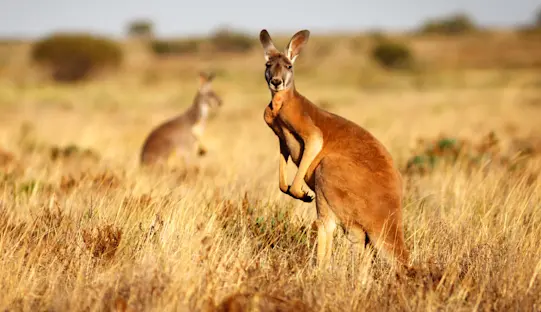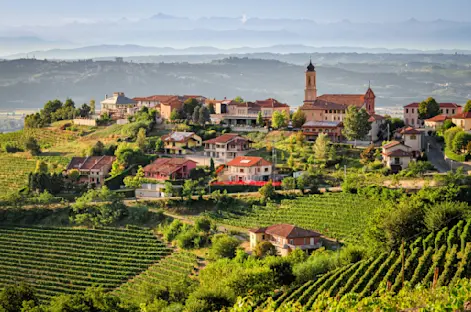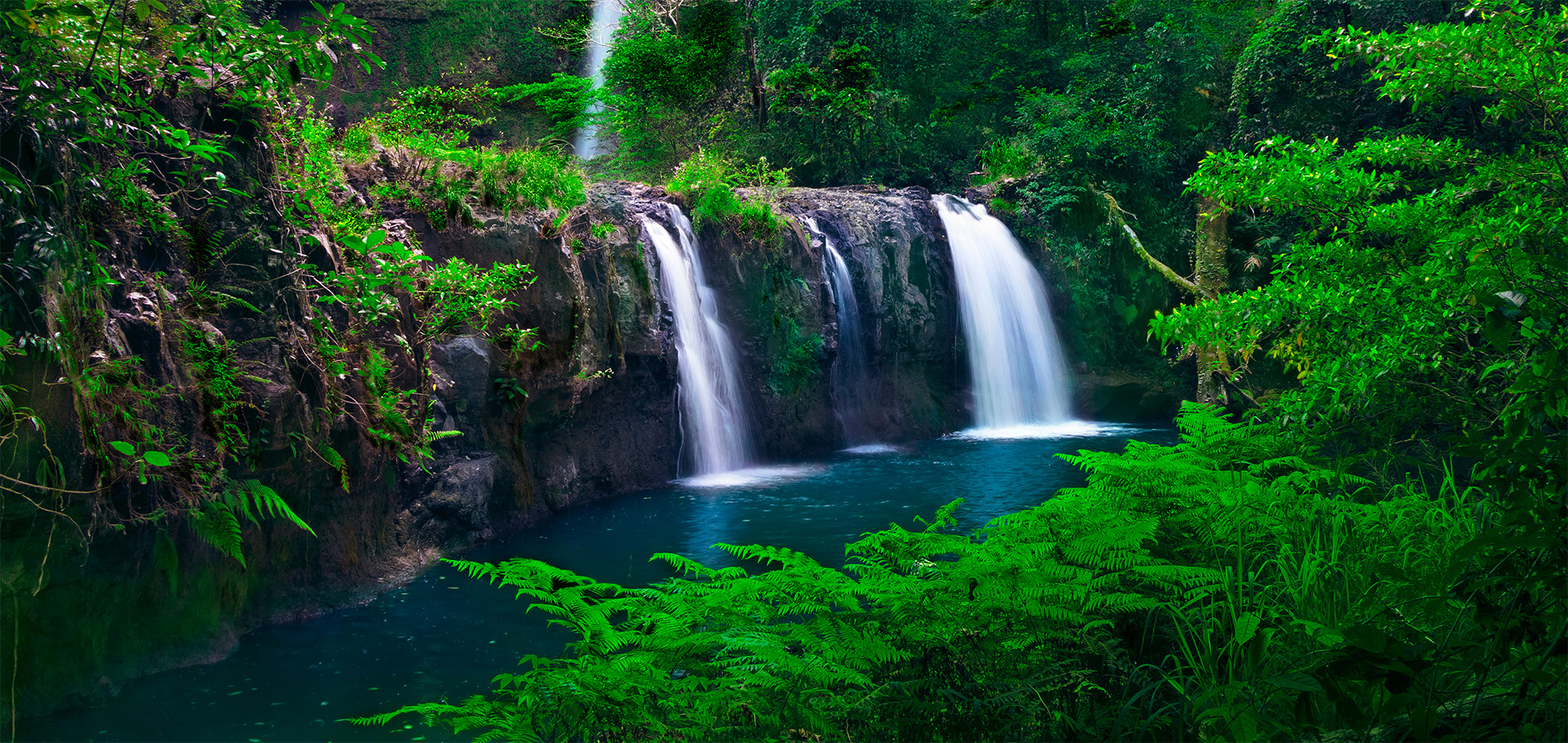Nat Hab’s Ultimate Australia Safari offers a contemplative escape into lands that hold some of Earth’s most delicate ecosystems, including the Atherton Tablelands, a tropical, lush island plateau that defines Tropical North Queensland. This plateau is teeming with life across rainforests, savannas, lakes and waterfalls. The resulting flora and fauna are remarkably distinct, a result of thousands of years of evolution and Indigenous cultivation.
Flora of Atherton Tablelands
Giant Red Cedar Tree
Red cedar has a unique history in Atherton Tableland. As one of the largest cedar trees in the Southern Hemisphere, this tree once covered the Mabi forest and much of the Atherton Tablelands. The Mabi forest once covered the plateau and gained its name from the original inhabitants, mabi being a Ngadjon word for the Lumholtz’s tree kangaroo. Some of the trees in Mabi, like the red cedar tree, can lose their leaves, which is uncommon in tropical rainforests. The Mabi forest is critically endangered, and only 4.5% of its former range exists.

Curtain Fig Tree
Inside Curtain Fig National Park in Yungaburra, you’ll be encapsulated in a world dominated by a 500-year-old singular strangler fig that supports its own complex ecosystem. This fig tree has extensive roots that descend 46 feet from the sky to the forest floor, creating a curtain across the entire park. An elevated boardwalk will give a low-impact way to experience this tree from all angles. The tree is 165 feet tall and has a trunk circumference of 128 feet, making it one of the largest trees in Tropical North Queensland, Australia. The park protects a small area of the endangered Mabi forest.

Rose Gum
Rose gum (Eucalyptus grandis) is a deciduous tree native to the east coast of Australia. Another common name for this species is flooded gum, which can reach heights of 180 feet! Like all eucalyptus trees, rose gum bears perfect flowers that await pollination from foraging insects, mainly honeybees.

Fauna of Atherton Tablelands
Herbert River Ringtail Possum
The Herbert River possum (Pseudochirulus herbertensis) is only found along the Herbert River on the Western Tablelands. Native to the island, this ringtail possum is arboreal, living mostly in the trees.
> Read: Learn more about Australia’s possums

Leaf-tailed Gecko
Large marble eyes and broad leaf-shaped tails make the leaf-tailed gecko stand out in its native habitat. These carnivores can almost completely obscure themselves in the forest, blending in with dry leaves or tree bark. They can flatten their bodies and hide from predators in branches, tree trunks, and leaf litter.

Australian leaf-tailed gecko © Matt Cornish
Sugar Gliders
Sugar gliders are nocturnal possums with gray fur and white underbellies that nest in tree hollows in groups of up to ten. Female sugar gliders have a high rate of birthing twins, and the joeys can stay with both parents until they are 10 months old. They are one of the largest marsupials that can enter a state of torpor, or temporary hibernation.
When they aren’t huddled together, you might catch them gliding across the tropical rainforest, using their built-in “wings” to leap from one tree to another, sometimes gliding the distance of half a football field! Possums have a thin flap of skin that connects their front and back legs, and their bushy tails help stabilize and guide them through the air.

They may remind you of flying squirrels or flying lemurs, but they are more closely related to other marsupials like the kangaroo or koalas. The species gained its common name due to its diet and strong preference for nectar, pollen, tree gum, and the sap of trees like eucalyptus. In 2021, it was discovered that there are actually three distinct species instead of just one! Fun fact: The Atherton Tablelands are home to the highest concentrations of possums and gliders in Australia and the world.

Mainland Platypus
The platypus is a semi-aquatic mammal that stands out in the animal kingdom as one of only two mammals in the world that can lay eggs. It is endemic to Australia and is mainly found in the freshwater systems in tropical rainforest lowlands and throughout the Atherton Tablelands. The platypus has a broad, flat tail and body covered in dense, waterproof fur.
When not foraging through streams and cobbles, the platypus rests in a burrow at the bank of a river, creek or pond. It feeds at night, mostly on aquatic invertebrates and insect larvae, using its distinct bill to sift through the substrate for life. Shrimps, waterbugs and other free-swimming organisms are often on the menu. Males have a venom gland in their upper leg that is connected to a horny spur on their ankles, making the platypus one of the few venomous mammals.

Australian Tree Kangaroos
Australia has two native species of tree kangaroos, the Lumholtz’s tree kangaroo (Dendrolagus lumholtzi) and the Bennett’s tree kangaroo (Dendrolagus bennettianus). Both species are highly adapted for tree dwelling with long muscled forearms and shorter hindlimbs. The Lumholtz’s tree kangaroos have reddish-gray fur, long bushy tails and soft pads on their feet that help them grip the forest trees as they climb. The Bennett’s tree kangaroos have gray-brown fur and tend to be a bit larger. They are found in tropical rainforests in the Atherton Tablelands.

Lumholtz’s tree kangaroo (Dendrolagus lumholtzi), photographed by Nat Hab Expedition Leader © Matt Cornish
Ulysses Butterflies
Papilio ulysses, commonly known as the Ulysses butterfly or Blue Emperor, is a large swallowtail butterfly native to Australia, Indonesia, Papua New Guinea and the Solomon Islands. Wingspans can reach up to 5.5 inches, but sizes vary by subspecies. In Queensland, their wingspan is about 4 inches. Their wings stand out with an iridescent, electric blue color and a warm blackish-brown underside that helps them camouflage when they perch.

Musky Rat-Kangaroo
One of the more common species in the Atherton Tablelands is the musky rat kangaroo (Hypsiprymnodon moschatus). It is the world’s smallest kangaroo species, weighing less than 1.1 pounds! This species is considered to be very primitive, having evolved over 20 million years ago. It is more similar to a possum than a kangaroo, as it regularly gives birth to twins and hops around the forest floor on all fours.

Boyd’s Forest Dragon
The Boyd’s forest dragon is not endemic to the Atherton Tablelands, but you’ll find a decent population of this lizard on the island. Known as a living dinosaur, this reptile has a large wedge-shaped head and plates on its cheeks, spines, head, back and chin. Unlike other lizards, it regulates its body temperature to match the surrounding vegetation, helping it avoid prey.

Ready to meet them for yourself? See these and myriad other plants and animals of the Atherton Tablelands on our Ultimate Australia Safari!































